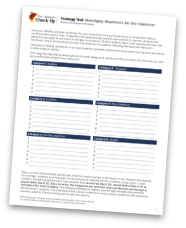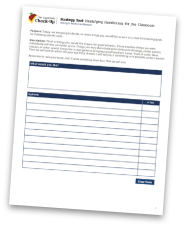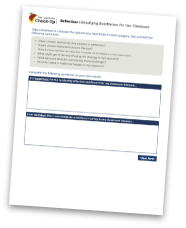Strategy: Identifying Reinforcers for the Classroom
Check-Up Menu > Identifying Reinforcers for the Classroom
There are five elements to choosing effective reinforcers:
How To
- Social reinforcers are potentially effective for all students at any age. Social reinforcers can include teacher and peer attention.
- Activity reinforcers work well for students who are self-directed and can accept a delay between the behavior and the reinforcement. Any social, work, or play activities that students engage in voluntarily are potential reinforcers. Extra recess time, leading the school pledge, playing a game, five minutes of talk time, listening to music, and computer time are all activity reinforcers that are available at little or no cost.
- Tangible reinforcers (e.g., comic books, notebooks, stickers, pencils) are most effective for students who do not have access to material goods, although almost all students will respond to them. The use of tangible reinforcers for an entire classroom can be expensive; therefore, it can be helpful to include access to activity and social reinforcers as well.
- Edible reinforcers (e.g., candy, chips, popcorn) appeal to most students and can be easily delivered immediately following a behavior. However, many school districts and parents object to the use of edibles for health, dental, or nutritional considerations; therefore, teachers should check with school administration and parents before using them.
- Escape reinforcers allow students to have something undesirable removed including certain tasks or demands, such as a no-homework pass, reduced assignments, or not wearing the school uniform for a day; these options can be highly reinforcing for students.
Strategy Tool


Reflection

Goal Setting

References to Other Relevant Resources:
Burns, M. K., Riley-Tillman, C. T., & VanDerHeyden, A. M. (2012). RTI applications, volume 1: Academic and behavioral interventions. New York, NY: Guilford Press
Northrup, J., George, T., Jones, K., Broussard, C., & Vollmer, T. R. (1996). A comparison of reinforcer assessment methods: The utility of verbal and pictorial choice procedures. Journal of Applied Behavior Analysis, 29, 201-212.
Stormont, M., Reinke, W. M., Herman, K. C., & Lemke, E. (2012). Academic and Behavior Supports for At-Risk Students: Tier 2 Interventions. New York: Guilford Press.


